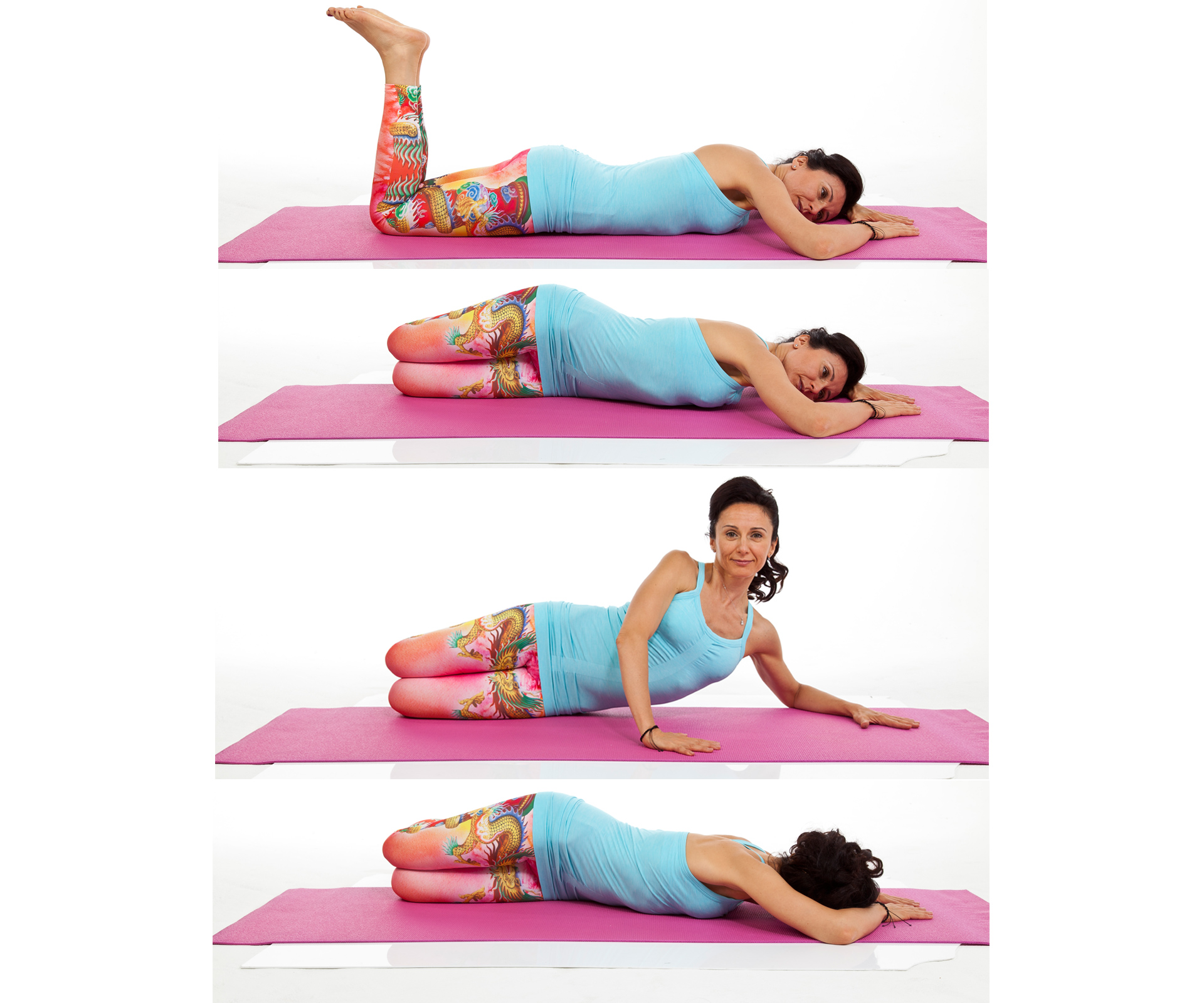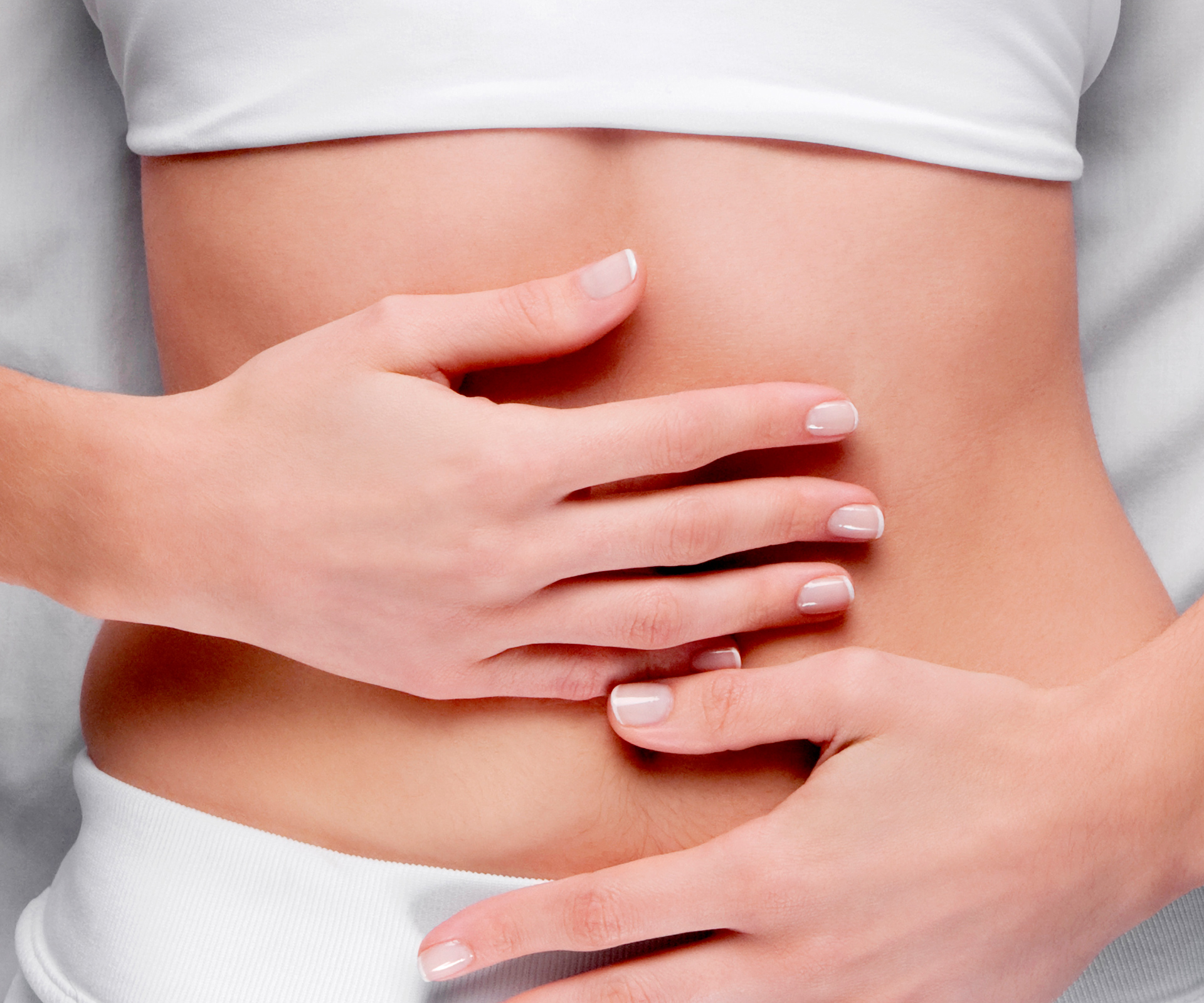You may have heard of hatha, ashtanga or vinyasa yoga, but how about yoga specifically for your gut?
When indigestion, constipation or acid reflux strike, most of us reach for an over-the-counter antacid remedy, but there’s a more natural – and free – way to relieve the pain and discomfort of gut upsets.
“The digestive system runs all the way from your mouth to your bowel, and the stresses of everyday life, from sitting too long or eating too fast, can knock it off kilter. Yoga can help you align your system, kick-starting your healthy, natural digestive rhythm,” says Elena Voyce, yoga instructor for more than 20 years and founder of Teach Yoga.
Voyce’s simple exercises help people align, strengthen and stretch their digestive systems to eliminate common problems such as indigestion, constipation and flare-up symptoms of irritable bowel syndrome (IBS), such as cramping and diarrhoea.
Another benefit of yoga is the calming effect it has psychologically.
Your mind and gut are closely linked – just think of how your stomach reacts if you’re nervous or anxious. So digestion yoga not only works to address the physical alignment of your gut but also to balance your state of mind.
Follow Voyce’s mini workout to experience a more harmonious digestive system
Before you begin make sure you’re sitting correctly before you start the exercises on this page. Place a yoga brick or rolled up blanket under your bottom and sit up straight with your legs bent behind you or crossed in front of you, whichever is most comfortable.

1. Relax your tongue
This exercise might seem unusual, but there’s method in the madness.
Your tongue is the gateway to your entire digestive system and can have a huge impact if it becomes tense, causing tightness in your oesophagus and stomach. Pulling and manipulating it not only relaxes it but also stretches your oesophagus and promotes the production of saliva, which contains digestive enzymes to help break down food.
Take a piece of clean cloth or tissue and use it to help you hold onto your tongue.
Once you have a firm grip, move it up to the right, down to the right, up to the left and down to the left. Repeat this three or four times holding your tongue in each position for a few seconds. By the end, you should feel a release in the back of your mouth and throat.

2. Soothe bloating with massage
A massage of the digestive system can help reduce bloating, stomach acidity and relieve abdominal cramps.
Sit up straight in your balanced position with your legs bent behind or crossed in front. Place the palm of your right hand on your abdomen just under your right breast and rest your left hand on top to apply pressure. Once your hands are in place, move them from right to left in a large circle three times while maintaining the pressure. This will massage your large intestine.
Make the circle smaller so your palms are over your small intestine and repeat the circular motion three times. Lastly, do one final circle over the larger intestine again.

3. Relieve digestive pressure
There’s an area on your palm, just below the thumb, which is a digestive pressure point. It’s believed that applying pressure here is like massaging your whole digestive system as it opens your stomach meridian – an energy pathway running from your ear to your toes.
Stay seated in the same upright position as the first exercise. Bring your dominant arm (the one you use most for daily activities) out in front of you with your thumb facing up towards the sky and your palm to the side.
With your other hand, apply pressure around the area below your thumb for five seconds. It will probably feel tender and painful as most people hold tension here. Repeat 3-5 times on each hand to reap the most benefits.

4. Kick-start your digestion
A tight back can sometimes cause digestive problems. This sequence helps with core elongation and middle back mobility and can help to stimulate digestive juices if you’re feeling sluggish.
- Lie on your front with your feet and legs together, bent at 90 degrees. Your elbows should be bent, your palms down with your thumb and index finger touching. Lower your head so your nose is under your thumbs and look to the right.
Breathe in and when you exhale, rotate your pelvis, feet and knees to the left side (the opposite side to where your head is pointing). Inhale and return to centre, without moving your head. Repeat five times. Once you’ve returned to the centre, turn your head to the left and repeat the exercise, this time lowering your legs to the right five times.
Finally, with your head looking right, slide your right hand down, bringing your wrist in line with your ribs. Lengthen and roll your shoulder blades back – keeping your armpit lifted so you’re not collapsing your chest and shoulders. In one simultaneous movement, exhale and push yourself up, trying to keep your waistline uplifted and your chest open.
Without moving your hands, inhale and return down to the floor. Repeat the whole sequence five times.

5. Help ease constipation
Compressing and expanding your digestive organs stimulates movement, or what’s called peristalsis (when your stools progress along the large intestine), and is particularly good for alleviating constipation. This exercise also helps to energise your kidneys, which remove waste products from your body.
The above picture shows where the yoga block should be for the exercises below – resting lengthways just above your pubic bone. You can substitute the block for a soft ball or folded towel to make it less intense at first.

Lie on your front, over the yoga block. Relax your feet and stretch your legs away from the centre of your body to lengthen through your hips. Fold your arms and relax your face and forehead onto them. As you start to breathe deeper, you will find your body rises and expands around the brick. Do this for between five and 10 breaths.
Next, very slowly, bend your elbows and raise the upper part of your body slightly so you can slide your body backwards towards the bottom part of the mat, so the brick now rests under the bottom of your ribcage. Change the cross of your folded arms and relax your head once more for another five deep breaths.
To come out of the pose, keep your head down, place your hands flat on the floor in line with your rib cage and spread your fingers. Take a deep breath and roll your shoulders backwards, allowing your shoulder blades to slowly meet. Push yourself up onto all fours while inhaling before standing up straight.

6. Stretch your sacroiliac joint
This exercise involves crunching and stretching to massage your digestive organs as well as stretching your sacroiliac joints at the base of your spine, which can ease lower back pain.
- Lie on your back with your legs straight and arms by your side. Starting with your more dominant leg, pull it towards your chest.
- Push your leg out and up on the diagonal, keeping it as straight as possible and bringing your body up off the mat. Allow your arms to follow and engage your core.
- Slowly lower your leg and body back down onto the mat and resume your laid down position before repeating with your other leg. Do five on each side.

Do the downward dog
The downward dog is a classic yoga pose that helps to stretch your back and stomach muscles and relieves constipation and indigestion. However, it isn’t suitable if you’re suffering from reflux, stomach acidity or heartburn. This modification allows you to reap all the benefits of the pose without any discomfort in your stomach.
Keeping your arms and legs straight, bend forward from your hips to lower your arms onto the back of a chair, with your thumbs pointing towards the sky, keeping your back straight so you create a right angle.
Look down and lower your head between your arms as you exhale before gradually lifting and looking ahead as you inhale. Slowly repeat the head nod movement five times and feel the stretch along your back and sides.

8. Take a seat
This final exercise is perfect for ending your session as it provides an all-over stretch of your stomach muscles and internal organs.
Sit down on a chair. To achieve a good posture, place yoga blocks under your bottom and feet, and place a firm cushion behind you. Position your feet flat on your blocks with your arms by your sides or resting in front of you on your lap.
Inhale deeply and slowly roll your head back so you’re looking at the ceiling, before rolling it forwards and exhaling back to a forward position.
Do this five times.
For more about Elena Voyce and digestion yoga, visit teachyoga.com.


